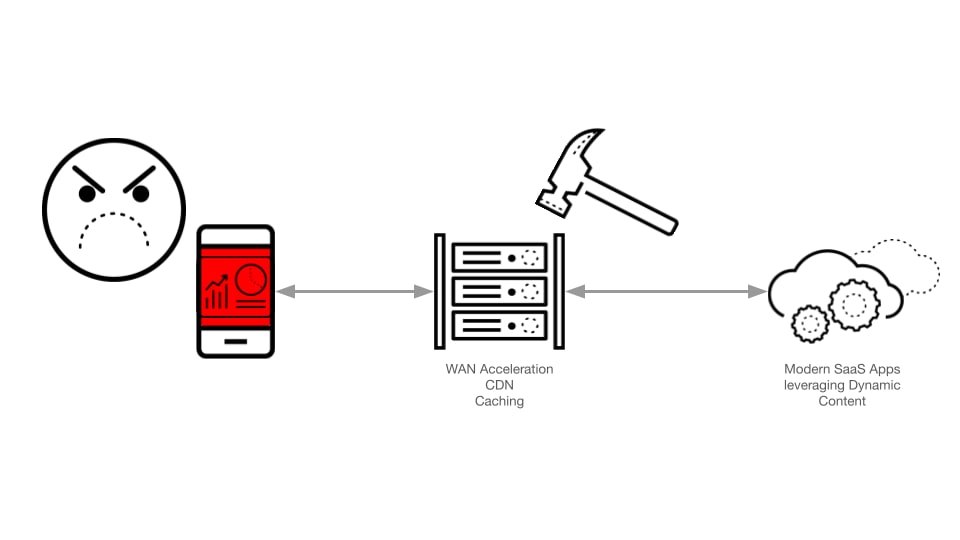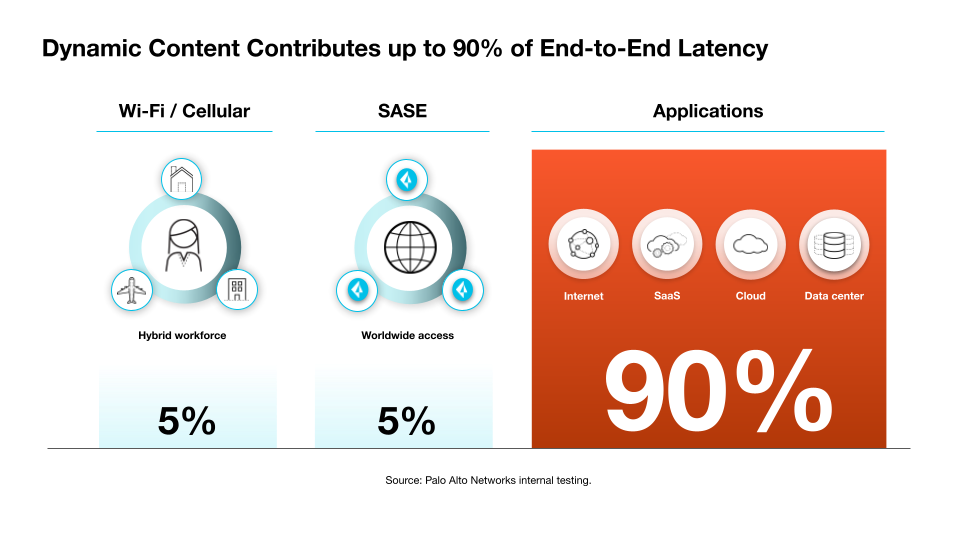PoPs, the Availability Bias, and App Performance
At Palo Alto Networks, we innovate based on first principles across security, performance, and availability. As part of our continued commitment to our customers, we constantly benchmark apps and infrastructure to identify the key factors contributing to poor app performance. In this blog, we’ll focus on one of the most repeated performance myths: adding more Points of Presence (PoPs) boosts app performance.
Our goal is to illuminate the three areas influencing end-to-end latency. We’ll share some key insights on end-to-end acceleration in the context of secure access service edge (SASE) and explain why adding more points of presence does not guarantee better app performance.
The human mind is masterful at solving problems using readily available solutions. Engineers often added PoPs to boost user app performance while scaling the internet. The Content Delivery Network (CDN) industry did a fantastic job in rolling out PoPs.
CDN technology was designed from the ground up to fully take advantage of replicating content close to end users. PoPs cached static content–like images or HTML–which made up most bandwidth-heavy content on the internet. This boosted the performance of websites and early web apps and lowered the load on origin servers.
When All You Have Is a Hammer, Everything Looks Like a Nail

More PoPs don’t solve dynamic content-related SaaS app performance problems.
Although the PoP architecture works well for the CDN world, that doesn't guarantee it will solve all performance problems. For instance, if the performance bottleneck is due to an app processing on-demand dynamic content unique to each end user, increasing the number of PoPs won’t yield the same performance boost.
Unlike the static apps of old, today's enterprise apps rely heavily on dynamic content. The services powering modern apps serve different content depending on the time of the day, the role of the end user, and the application context. This means that the content must first be processed before it can be delivered.
You Can Only Optimize What You Measure
As a recognized leader in securely connecting today’s hybrid workforces from anywhere to apps everywhere, Palo Alto Networks focuses on empirical methods to drive our solutions. We apply this philosophy to app performance, starting with a simple maxim: You can only optimize what you measure.
First, evaluating latency end-to-end instead of only in the network is critical. We conducted extensive tests on modern applications to measure how latency is distributed end-to-end (from app response time to throughput achieved per session to the end client). Our data showed that over 90% of latency occurs when apps process large datasets and dynamic content. However, the apps businesses heavily rely on use dynamic content to create user value.

Image: Latency landscape for modern web applications.
Dynamic content–like the data visualization in your CRM dashboard widgets–is processed on demand because it’s unique to individual users and constantly changing. Traditional acceleration techniques like caching are not applicable here because caching replicates the same content for all users, and cached files rarely change, if at all.
The remaining latency occurs within the network (roughly 5%) and when users connect over Wi-Fi or mobile networks to access these applications (also roughly 5%). As the diagram above shows, PoPs, while still relevant, can only influence ~5% of the overall end-to-end latency.
The Emergence of SASE
Traditionally, virtual private networks (VPNs) were the primary tool for connecting remote users and locations to their apps and services. These connections worked well when all the apps, data, and users were in the same perimeter. But when apps moved to the cloud, funneling all traffic through corporate data centers led to suboptimal experiences for remote workers. SASE emerged as a response to these suboptimal conditions, promising a more direct and streamlined pathway for remote networks and users.
The SaaS Software Revolution: Beyond the PoP
Most SASE vendors view latency and performance issues from a network perspective, attempting to overcome performance bottlenecks by adding more PoPs. They suggest that increasing the number of PoPs will resolve app performance issues because adding more PoPs is one of the few tools in their toolbox.
Implementing WAN acceleration and CDN caching as part of an overall PoP strategy was effective for less complex apps. Both technologies provide improved performance and efficiency in some use cases. However, as we identified, most latency is not experienced in the areas these products focus on.
The transition to software-as-a-service (SaaS) revealed a fundamental limitation: WAN acceleration and CDN caching were not designed to handle the dynamic content that dominates today’s application ecosystems. They can’t speed up dynamic content because it's computed on demand.
Thus, we pose a rhetorical question: If you increase the number of PoPs in your network by 10x, will your app performance now be 10x as good?
"Compute the Future" to Boost App Performance
We've recognized the gap and integrated the new Prisma SASE App Acceleration technology into our Prisma SASE framework.
In an industry first, App Acceleration “computes the future” by preparing the relevant dynamic content each individual user needs ahead of time, leveraging patented, app-aware technology. When the content is needed–for example, when the user loads a CRM dashboard–it has already been prepared. App Acceleration has computed the right content and sent it through security processing in the SASE cloud for immediate delivery.
Prisma SASE App Acceleration is the only solution in the world using this approach.
This technology represents a fundamental rethinking of how to enhance application performance and connectivity.
Furthermore, no app modifications are required to use App Acceleration. It continuously and securely learns the usage patterns inside of an app, so it gets better over time.
Lastly, App Acceleration creates a custom packet shaper for each user session to mitigate the effects of adverse network conditions like packet loss. This combats latency often experienced when connecting over Wi-Fi and cellular to ensure that adverse network conditions do not hinder employee productivity.
True enhancements in digital experience and application performance require a holistic approach that addresses end-to-end latency, including latency inside the app. App Acceleration drives a seamless and secure digital experience for users everywhere.
By leveraging App Acceleration, Prisma SASE customers empower their workforce at the individual user level. Applications can now perform up to five times faster than compared to directly over the internet. This isn’t just about speed but about providing a consistently superior, secure, fast, and tailored user experience through intelligent technology that goes beyond merely adding more PoPs.
Join us at InterSECt 2024 to learn more about how App Acceleration for Prisma SASE fuels transformative, consistent, and secure experiences for today’s digital organizations.